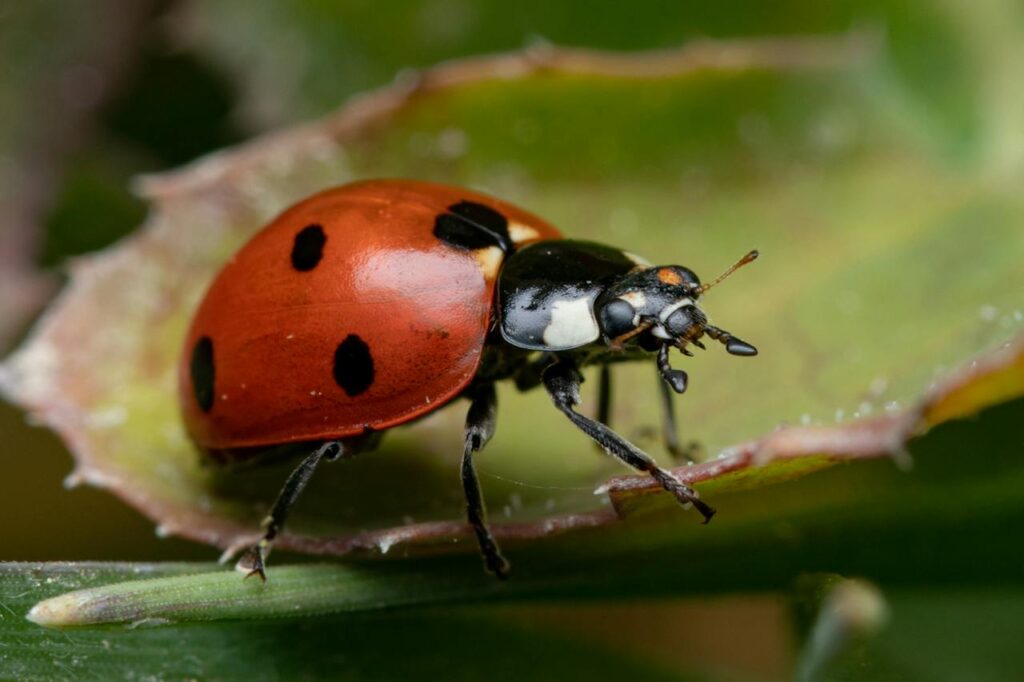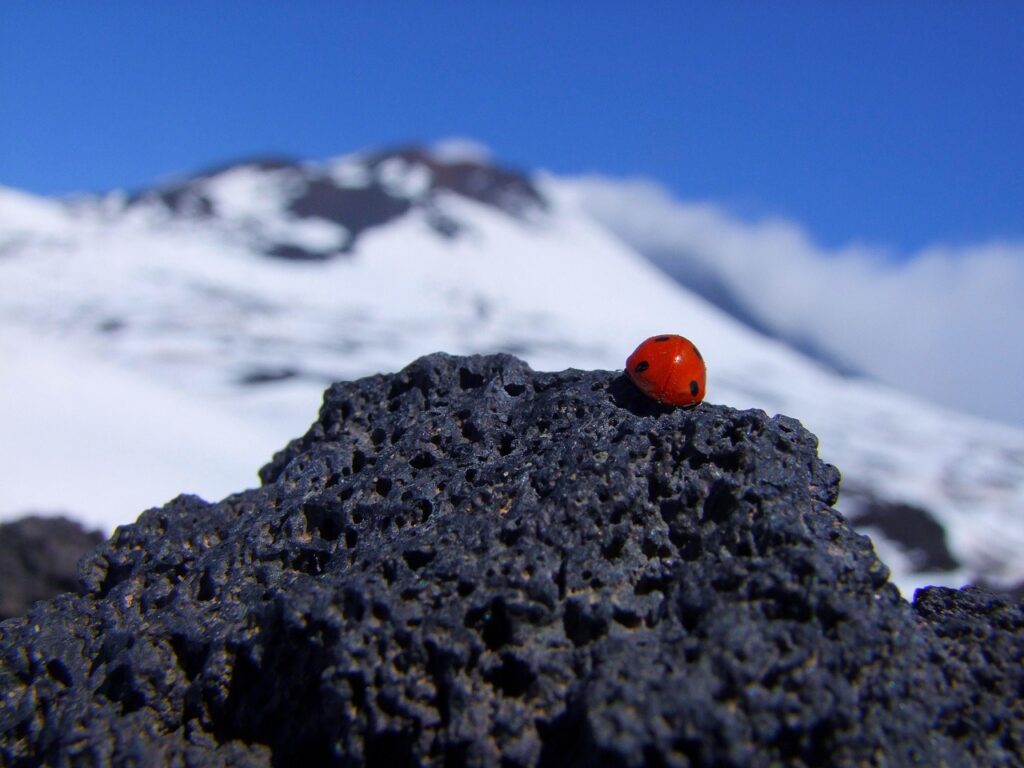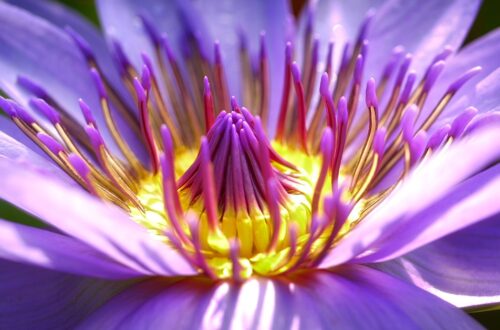
Fascinating Facts About Ladybugs (The Best Scoop)
Fascinating Facts About Ladybugs
When we think of charming, beneficial insects, ladybugs, or lady beetles as they’re scientifically termed, often come to mind. These tiny, colorful beetles are more than just adorable; they serve essential functions in our ecosystem, particularly in pest control. Also with their bright colors and distinctive black spots, they are familiar sights in gardens across North America. Additionally this article reveals fascinating facts about ladybugs, making you see them in a new light the next time one lands on you!
A World of Different Species
Ladybugs Vs. Lady Beetles: What’s in a Name?
Facts About Ladybugs: Interestingly, while we popularly call these beetles “ladybugs” in the United States, they are referred to as “ladybird beetles” in other parts of the world, such as Europe.
In fact the name “ladybug” is derived from the Virgin Mary, with “lady” alluding to the Virgin Mary from the Middle Ages, and “bug” being a general term for tiny insects.
By the same token the term “ladybird beetles” echoes this history with “lady’s bird” or “lady’s beetles”.
Facts About Ladybugs: Did You Know? There are over 5,000 different species of ladybugs globally, with around 450 native species found in North America alone!
Ladybug’s Vibrant Warning System
Bright Colors: Nature’s Alarm
Ladybugs come in various shades, from bright red to yellow, and even black beetles. However these bright colors are not just for show; they act as a warning sign.
Predators such as birds and small mammals recognize these colors and associate them with a foul taste or potential harm. As a result this natural defense mechanism helps deter potential predators, ensuring the ladybug’s safety.
Black Spots and More
Facts About Ladybugs: The number of black spots on an adult ladybug varies among species. While the seven-spotted ladybug, one of the most common ladybugs, sports seven black dots, others might have stripes or no markings at all. But contrary to popular belief, the number of spots does not determine the age of a ladybug.
Ladybugs: Nature’s Pest Controllers

Beneficial Predators of Plant Pests
One of the most fascinating facts about ladybugs is their appetite for harmful insects. Indeed a hungry ladybug can consume up to 50 aphids a day.
By feasting on pests like scale insects, spider mites, and young ladybugs also known as ladybug larvae, they act as nature’s pest controllers. This makes them beneficial insects, aiding in maintaining the health of gardens, crops, and green spaces.
Facts About Ladybugs: Source Fact: According to a study published in the Journal of Applied Ecology, ladybugs can reduce harmful insect populations by up to 50% in a single season!
Conclusion of this Segment
From their history-steeped names to their role as nature’s vibrant warriors against pests, ladybugs or ladybird beetles are truly intriguing creatures. Thus their myriad colors, patterns, and species only add to their allure.
But beyond their beauty lies a fierce predator, an essential cog in our ecological system. However as we delve deeper into fun facts about ladybugs and untold stories about these beneficial beetles, you’ll discover just how integral they are to our environment.
The Life Cycle of a Ladybug: From Larva to Lovely Beetle

Complete Metamorphosis: A Transformation Tale
Facts About Ladybugs: Just like butterflies, ladybugs go through a complete metamorphosis. To explain this means they pass through four distinct life stages: egg, larva, pupal stage, and adult beetles.
- Egg Stage: Female ladybugs lay clusters of tiny, yellow eggs, often on the underside of leaves. It’s not uncommon for females to lay infertile eggs among the fertile ones. This strategy provides the soon-to-hatch larvae with an immediate food source if other prey is in short supply.
- Larval Stage: Upon hatching, ladybug larvae resemble tiny alligators with elongated bodies and tiny spines. Contrary to their seemingly intimidating appearance, these larvae are voracious eaters, mainly feeding on aphids.
- Pupal Stage: After several weeks of continuous feeding and growing, the larvae attach themselves to a leaf or stem, transforming into a pupa. This is a resting stage where they undergo a dramatic transformation.
- Adult Stage: The adult ladybug emerges with soft shells that harden and become vibrant within hours. The newly emerged adult beetles, with their characteristic black dots, are ready to begin the cycle anew.
The Myriad Colors and Patterns of Ladybugs
More than Just Red and Black
While the classic red insect with black markings is the most recognized, ladybugs exhibit a plethora of colors and patterns. From spotted ladybugs to those that have stripes, and from the seven-spot ladybug to the harlequin ladybug, there’s an array of fascinating variations.
The Asian ladybug, Harmonia axyridis, for instance, can be red, orange, or even black, and might have several, just a few, or no spots at all!
A Sign of Change: Yellow Liquid Mystery
Ever noticed a yellow liquid when a ladybug lands on you? It’s not what you might think. This isn’t urine but a defensive tactic called “reflex bleeding.” This foul-smelling blood, sourced from their leg joints, acts as a deterrent to predators. It’s another example of the ladybug’s body having unique features that aid in its survival.
Ladybugs and Culture: Ancient Symbols and Modern Day Beliefs
A Sign of Good Luck and More
Throughout ancient times and across cultures, ladybugs have been seen as symbols of good fortune. Hence in many cultures, if a ladybug lands on you, it’s considered a sign of good luck to come. Furthermore some even believe the number of spots on its back indicates how many months of good luck you’ll have. Additionally, the name “ladybug” having connections with the Virgin Mary from the Middle Ages ties them with religious significance in certain regions.
Mexican Bean Beetle: The Not-So-Beneficial Cousin
While ladybugs are celebrated for their role in pest control, not all lady beetles share this benevolent nature. The Mexican bean beetle, a close relative of our beloved ladybug, is one of the most prolific plant pests in North America. Instead of helping gardeners by consuming aphids, this beetle feeds on bean plants, making them a nuisance.
Ladybugs in Distress: Threats and Conservation

The Threat of Non-native Species
With the introduction of non-native species, like the Asian ladybug, native species sometimes face threats of displacement. These invasive beetles often outcompete the local species for food sources. Moreover, the harlequin ladybug, originally introduced as a pest control measure, has now become a dominant species in many regions, pushing out native species.
Conservation Efforts
Recognizing the importance of ladybugs in ecosystems, many organizations are involved in their conservation. Therefore by studying ladybug populations, we can better understand the health of our ecosystems and take measures to protect these tiny warriors.
Delving Deeper: More Fun Facts About Ladybugs
A Ladybug’s Vision: Seeing the World in Facets
Ladybugs possess compound eyes, which means their eyes are made up of numerous tiny lenses. This unique structure allows them to detect quick movements, helping them effectively hunt prey like fruit flies and evade predators.
Dietary Habits: A Liquid Lifestyle
Despite their voracious appetite for plant pests, ladybugs enjoy a mostly liquid diet. Using their strong mandibles, they pierce their prey and consume the internal fluids. In times when aphids and other soft-bodied insects are scarce, some ladybug species might resort to consuming pollen, giving them an alternative source of sustenance.
The Art of Flight: Behind Those Hard Shells
Hidden beneath their hard, colorful elytra (wing covers) are a pair of delicate, transparent wings. Ladybugs can fly at speeds up to 15 miles per hour, using these wings. The next time you see one of these little insects, consider the marvel of engineering tucked neatly beneath those iconic black-spotted red shields.
Predators and Defense: Navigating the World as a Tiny Beetle

Potential Threats: Who’s After the Ladybug?
While ladybugs are potential predators for many insects, they’re not entirely without threats. Insect-eating birds, assassin bugs, and spiders can prey on them. Their bright warning colors, combined with their ability to secrete a foul-tasting liquid, help keep many of these predators at bay.
Mimicry: Nature’s Form of Flattery
Owing to their success in deterring predators with their bright colors, other insects have evolved to look like ladybugs, hoping to avoid being eaten. This form of mimicry is a testament to the ladybug’s effective natural defenses.
Ladybugs in Our Homes: Winter Invaders or Welcome Guests?
Group Hibernation: A Warm Winter Getaway
In regions where temperatures drop considerably during winter, ladybugs seek warmth. They tend to hibernate in large groups, often in the nooks and crannies of homes. While seeing a cluster of these beetles might be surprising, they’re simply seeking refuge from the cold and will leave once warmer temperatures return.
Asian Ladybug: A Common Home Invader
The Asian ladybug, introduced to combat aphids, is particularly known for invading homes during the winter. Unlike native species, they can occasionally become a nuisance due to their large numbers. Still, they’re harmless and can be gently relocated if they become bothersome.
Ladybugs and Humans: A Relationship Spanning Ages
Beneficial Ladybugs in Agriculture
Farmers and gardeners have recognized the value of ladybugs for a long time. By naturally controlling pests, ladybugs reduce the need for chemical pesticides, making crops healthier and more sustainable. Today, they’re commercially bred and can be purchased to release in gardens as natural pest controllers.
Symbolism and Folklore: A Bug of Many Tales
Beyond their agricultural significance, ladybugs hold a special place in folklore. From being considered a sign of a fair weather in ancient times to their association with the Virgin Mary in the Middle Ages, these little insects have been subjects of admiration and intrigue throughout history.
In Literature and Media
Ladybugs have also fluttered their way into literature and media. Children’s books often feature them, teaching kids about nature, life cycles, and the environment. They also appear in movies, songs, and even as popular motifs in fashion.
Delicate yet Resilient: Understanding the Ladybug’s Anatomy

Size and Shape: Miniature Marvels
The average ladybug measures just about 0.3 to 0.4 inches in length. Their dome-shaped bodies are not just for aesthetics; this shape offers them protection and aids in retaining moisture.
Legs and Locomotion: Not Just for Walking
A ladybug has six legs, aiding in quick movement on surfaces. These legs also play a crucial role in tasting food. Yes, ladybugs taste with their feet! They walk over potential food sources, and receptors in their feet help them identify if it’s something edible.
Sensing the World: Antennae and More
Ladybugs use their antennae for smell and touch. These sensory organs guide them toward food sources and help detect pheromones, crucial for mating.
Ladybugs Around the Globe: Diversity and Distribution
Species Galore: A World Full of Ladybugs
There are over 5,000 different species of ladybugs globally. From the most common ladybug, the seven-spotted lady beetle, to the rare black ladybugs with red or yellow spots, their diversity is truly astounding.
Geographical Spread: From Deserts to Meadows
Ladybugs are found on every continent except Antarctica. Whether it’s the meadows of North America, the deserts of Africa, or the forests of Asia, ladybugs have adapted to a range of habitats, showcasing their remarkable resilience.
The Circle of Life: Reproduction and Longevity
Mating and Offspring: Continuing the Legacy
Facts About Ladybugs: Ladybugs have a fascinating mating ritual. Once the male finds a suitable mate, he climbs onto her back, and they can remain in this position for up to two hours! After mating, the female lays her eggs, ensuring the next generation of these beneficial insects.
Lifespan: A Life Lived in Seasons
The life of a ladybug might seem short to us, but they make the most of it. While some species live only a few weeks, others, especially those in colder climates, can live up to a year, hibernating for most of the winter.
Threats to Ladybugs: Challenges in the Modern World

Pesticides: A Double-Edged Sword
While pesticides help control harmful insects, they can also adversely affect beneficial insects like ladybugs. By affecting their food sources or directly harming them, pesticides pose a significant challenge to maintaining healthy ladybug populations.
Climate Change: Shifting Habitats and Food Sources
The changing climate has resulted in altered habitats, impacting the distribution of various ladybug species. With their food sources either dwindling or shifting, ladybugs have to adapt quickly or face population declines.
Joining Hands for Conservation: How You Can Help
Creating Ladybug-Friendly Gardens
Planting diverse plants that attract aphids (ladybugs’ primary food source) can help. Plants like dill, cilantro, and fennel are excellent choices. Refraining from using chemical pesticides and opting for organic methods can also make a difference.
Educating and Spreading Awareness
Facts About Ladybugs: By educating oneself and others about the importance of ladybugs and the threats they face, communities can come together to protect these tiny warriors. Consider joining or supporting organizations dedicated to insect conservation.
Citizen Science Projects: Lend a Hand
Many projects allow everyday people to contribute to ladybug research. By documenting and sharing ladybug sightings, you can assist scientists in tracking their populations and understanding their behaviors better.
The Multifaceted Role of Ladybugs in Ecosystems
Pillars of the Food Web
Ladybugs play an essential role in the food web, acting as both predators and prey. Their diet primarily consists of harmful insects, which helps maintain a balance in various ecosystems. On the flip side, they provide nutrition for birds, small mammals, and other larger insects.
Pollination Partners
While they’re not as renowned as bees or butterflies, ladybugs do play a part in pollination. As they move from flower to flower in search of aphids, they inadvertently transfer pollen, assisting in the reproduction of various plants.
Nature’s Pest Control
Ladybugs serve as natural pest controllers in gardens and farms. Their insatiable appetite for aphids and other pests reduces the need for chemical interventions, promoting a healthier and more sustainable environment.
Fascinating Myths and Beliefs Surrounding Ladybugs

Signs of Good Fortune
In many cultures, a ladybug landing on you is considered a sign of good luck. This belief might stem from farmers’ gratitude towards these insects for protecting crops from pests.
Counting Spots for Age? Think Again!
A common misconception is that the number of spots on a ladybug indicates its age. In reality, the spots are more about species and maturity rather than age. So, the next time you see a seven-spot ladybird, remember it’s not seven years old!
Ladybugs and the Weather
Some folklore suggests that ladybugs can predict the weather. It’s believed that if they fly away after landing on you, good weather is on the horizon.
Facts About Ladybugs: Frequently Asked Questions
Why are ladybugs called “lady” bugs?
The name “ladybug” originated in Europe during the Middle Ages. They were named after the Virgin Mary, often referred to as “Our Lady,” due to their bright red color, reminiscent of the Virgin’s cloak in many artistic representations.
Do ladybugs bite?
While ladybugs have the capability to bite, they rarely do so. Even if they do, it’s usually painless and harmless.
What’s the difference between ladybirds and ladybugs?
There’s no difference! “Ladybird” is the common name in the UK, while “ladybug” is more popular in the United States.
Why do ladybugs release a yellow liquid?
This yellow liquid is their blood, which they release as a defense mechanism when threatened. It’s bitter and foul-smelling, deterring potential predators.

Wrapping Up: A Tribute to the Humble Ladybug
Facts About Ladybugs; As we now know Ladybugs are more than just colorful additions to our gardens. Their role in nature is profound, from controlling pests to being a part of intricate food webs. Their cultural significance, combined with their ecological impact, showcases their indispensability.
As we go about our lives, it’s essential to acknowledge and appreciate the remarkable contributions of these tiny beetles. Their vibrant colors, fascinating life cycles, and relentless spirit are a testament to nature’s wonder.
Let’s ensure that the next time a ladybug lands on our open arms, we welcome it with gratitude and a deeper understanding of its significance in our world.




